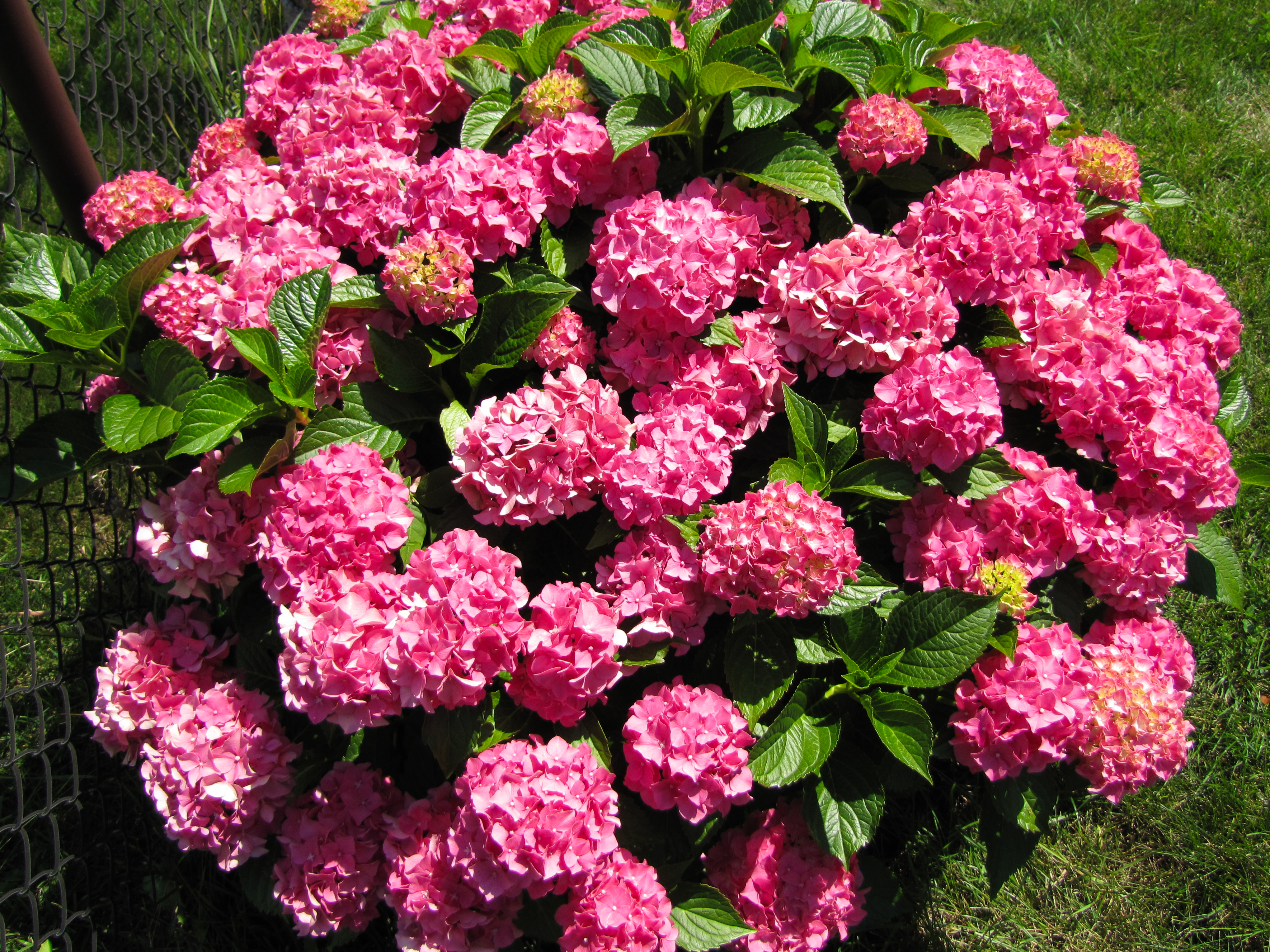Hydrangea (/ha?'dre?nd?i?/;common labels hydrangea or hortensia) is a genus of 70-75 kinds of flowering plant life local to southern and eastern Asia (China, Japan, Korea, the Himalayas, and Indonesia) and the Americas. Definitely the greatest types diversity is in eastern Asia, notably China, Japan, and Korea. The majority are shrubs 1 to 3 meters tall, but some are small trees, among others lianas reaching up to 30 m (98 foot) by climbing up trees and shrubs. They could be either evergreen or deciduous, although cultivated temperate kinds are all deciduous generally.Having been introduced to the Azores, H. macrophylla is quite typical now, on Faial particularly, which is known as the "blue island" due to the multitude of hydrangeas present on the island.Life cycleHydrangea blossoms are produced from early spring to late fall; they expand in flowerheads (corymbs or panicles) frequently at the ends of the stems.
Usually the flowerheads contain two types of blossoms: small non-showy blossoms in the guts or interior of the flowerhead, and large, showy bouquets with large brilliant sepals (tepals). These showy blooms are lengthened in a diamond ring often, or to the surface of the tiny flowers. Plant life in crazy populations typically have few to none of the showy blossoms, while cultivated hydrangeas have been picked and bred to have more of the bigger type flowers.There are two flower arrangements in hydrangeas with Corymb style inflorescens, which includes the commonly grown "bigleaf hydrangea"--Hydrangea macrophylla. Mophead blossoms are large spherical flowerheads resembling pom-poms or, as the name indicates, the relative brain of your mop. On the other hand, lacecap flowers bear round, flat flowerheads with a center core of subdued, small flowers surrounded by outer rings of larger flowers having showy sepals or tepals.
The bouquets of some viburnums and rhododendrons can show up, initially, just like those of some hydrangeas.Colors and earth acidityIn most kinds the plants are white, however in some kinds (notably H. macrophylla), can be blue, red, green, light purple, or dark purple. In these kinds the colour is afflicted by the presence of metal ions which are available or tied up depending after the earth pH. For H. macrophylla and H. serrata cultivars, the flower color can be determined by the relative acidity of the soil: an acidic soil (pH below 7), will have available aluminum ions and produce flowers that are blue to purple typically, whereas an alkaline soil (pH above 7) will tie up aluminum ions and bring about pink or red flowers.
This is the effect of a color change of the blossom pigments in the presence of aluminium ions that can be taken up into hyperaccumulating vegetation.[6] Minimizing the pH of potting soils or mixes usually will not change the bloom color to blue, because these soils haven't any aluminum ions. The ability to blue or green a hydrangea is also affected by the cultivar. Some plants are selected because of their ability to be blued, while others are bred and selected to be red, white or pink. The flower color of all other Hydrangea species is not afflicted by aluminum and cannot be changed or shifted. Hydrangeas likewise have a nickname called 'Change Rose'.
Sunday Snapshots – Forever Pink Hydrangea

Tidak ada komentar:
Posting Komentar